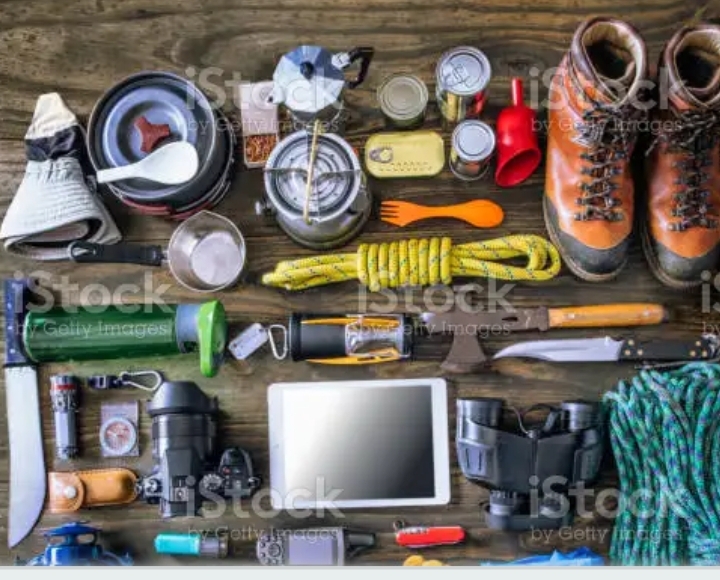In an unpredictable world, being prepared for unforeseen situations is paramount. Whether you’re an outdoor enthusiast, an adventurer, or simply someone who values personal safety, having the right survival tools and equipment can make all the difference. In this article, we will delve into the essential survival tools and equipment that can aid you in challenging circumstances, from wilderness adventures to emergency situations.
The Importance of Survival Tools and Equipment
Survival tools and equipment serve as your lifeline when faced with adverse conditions. They enable you to meet basic needs such as shelter, water, food, and protection. When venturing into the great outdoors or navigating through emergencies, having the right tools can mean the distinction between safety and peril.
Shelter and Warmth
- Shelter: A sturdy shelter shields you from the elements and provides a safe haven. Lightweight tents, tarps, or even improvised shelters like debris huts can be invaluable.
- Sleeping Bag: A quality sleeping bag designed for various temperatures ensures a good night’s sleep even in cold environments.
- Fire-starting Tools: Fire not only provides warmth but also helps with cooking and signaling for help. Carry waterproof matches, lighters, or fire-starting kits.
- Insulation Layers: Dressing in layers and having insulated clothing is crucial to maintaining body heat.
Water and Food
- Water Filtration: Clean water is essential for survival. Water filters or purifiers remove contaminants from natural sources, making water safe to drink.
- Emergency Rations: Non-perishable food items like energy bars, freeze-dried meals, and high-calorie snacks are convenient sources of sustenance.
- Cooking Tools: Lightweight cookware, portable stoves, and utensils allow you to prepare and cook food even in remote areas.
Navigation and Communication
- Map and Compass: These classic tools help you navigate and avoid getting lost. They don’t rely on batteries and are dependable.
- GPS Device: A Global Positioning System (GPS) device can provide precise location data, aiding in navigation.
- Signaling Devices: Flares, whistles, and signal mirrors can attract attention and help rescuers locate you.
- Communication Device: A satellite phone or emergency radio can be essential for staying in touch during emergencies.
First Aid and Medical Supplies
- First Aid Kit: A well-stocked first aid kit should include bandages, antiseptics, pain relievers, and medical tools.
- Medications: Personal medications and basic over-the-counter drugs can address medical needs.
- Medical Tools: Tweezers, scissors, and a multi-tool can serve for medical procedures and other tasks.
Multi-Functional Tools
- Multi-Tool: A versatile tool that combines various functions like pliers, knives, screwdrivers, and more.
- Survival Knife: A sturdy, versatile knife assists in tasks like cutting, hunting, and self-defense.
- Duct Tape: This seemingly simple item can be used for repairing gear, creating makeshift shelter, and more.
Personal Protection
- First Line of Defense: A personal protection tool like pepper spray or a personal alarm can provide a sense of security.
- Protective Clothing: Gloves, goggles, and a hat provide protection against environmental hazards.
Considerations for Choosing Survival Equipment
When selecting survival tools and equipment, several factors come into play:
- Quality: Invest in high-quality, durable gear that can withstand harsh conditions.
- Versatility: Opt for tools that serve multiple purposes, reducing the overall load.
- Weight and Size: Lightweight and compact items are easier to carry and transport.
- Training: Acquire knowledge and training on how to use each tool effectively.
- Personalization: Tailor your equipment to your specific needs and the environment you’ll be in.
Conclusion
Survival tools and equipment are not just accessories; they are lifelines that can mean the difference between safety and danger in challenging situations. Whether you’re an outdoor enthusiast, a traveler, or someone who wants to be prepared for emergencies, having the right gear is essential. By understanding the importance of shelter, water, food, navigation, communication, first aid, multi-functional tools, and personal protection, you can assemble a well-rounded kit that equips you for a variety of scenarios. Remember, being prepared is not just about having the gear, but also about knowing how to use it effectively when the need arises.



